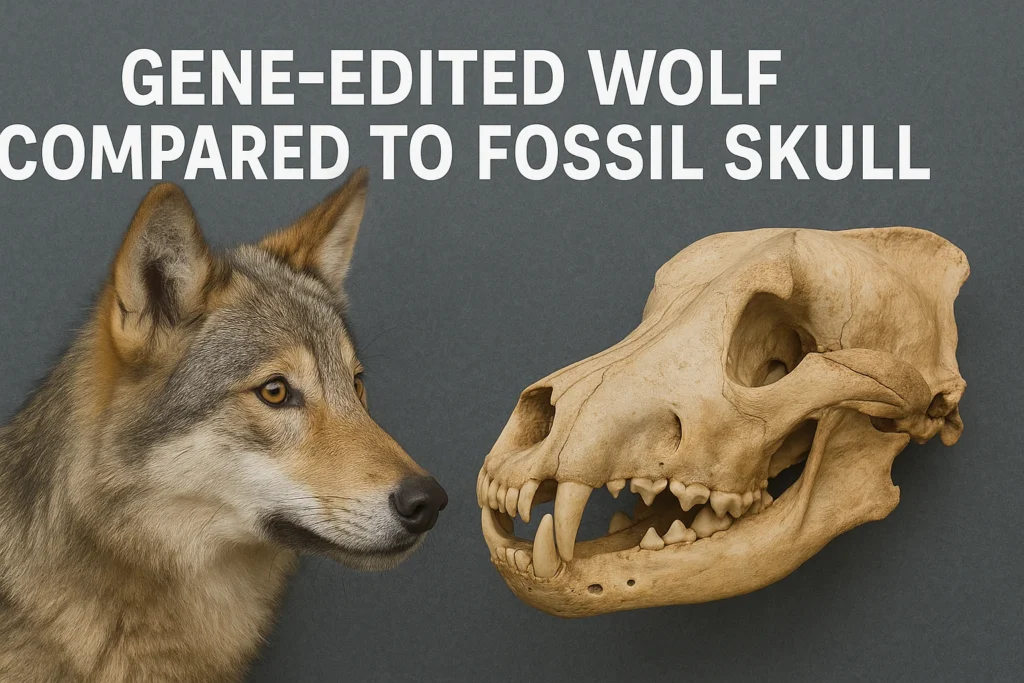Imagine a pacemaker smaller than a grain of rice that dissolves after use—or wolves genetically modified to resemble their extinct Ice Age ancestors. These aren’t sci-fi fantasies but real 2024 biotech breakthroughs reshaping medicine and conservation.
This article explores:
✔ The world’s first injectable, biodegradable pacemaker
✔ How CRISPR is bringing back traits of extinct dire wolves
✔ Ethical debates in biotechnology
✔ What these advances mean for the future
Key Takeaways
💉 Injectable pacemaker: No surgery needed, dissolves after healing (MIT/Harvard development).
🐺 “De-extinction” wolves: Modified grey wolves show dire wolf traits (stronger jaws, thicker fur).
🏥 Medical revolution: Biodegradable implants could replace 80% of temporary medical devices.
🌍 Conservation impact: Could restore lost ecosystems—but raises ethical concerns.
⚠️ Regulation gaps: Global policies lag behind biotech advancements.
Breakthrough #1: The Disappearing Pacemaker
How It Works
- Size: 1mm (vs. 10mm traditional pacemakers)
- Material: Silk-protein composite that dissolves in 6–8 weeks
- Procedure: Injected via catheter, no open-heart surgery
| Feature | Traditional Pacemaker | Injectable Pacemaker |
|---|---|---|
| Surgery | Required | None |
| Recovery | 6+ weeks | Immediate |
| Cost | $20,000–$50,000 | Estimated $5,000 |
“This could prevent 300,000+ surgical complications annually.” — Dr. Ellen Roche, MIT Lead Researcher
Future Applications
- Post-heart attack stabilization
- Pediatric patients (grows with the child)
Breakthrough #2: CRISPR Wolves Reviving Extinct Traits
The Science Behind “De-Extinction”
- Gene-edited grey wolves express dire wolf DNA (from 12,000-year-old fossils)
- Key traits restored:
- 30% stronger bite force
- Cold-adapted thicker fur
- Pack hunting instincts

Conservation Goals:
- Restore apex predators to rebalance ecosystems
- Study climate adaptation in real time
⚠️ Controversy: Critics warn of unintended ecological consequences.
Ethical Dilemmas in Biotechnology
Medical Tech Concerns
- Who owns dissolvable implant patents?
- Could hackers disrupt wireless pacemakers?
De-Extinction Debates
- Pro: Restores biodiversity lost to human activity
- Con: “Playing God” with ecosystems
Global Regulation Status:
- EU: Strict GMO laws may block wolf release
- US: FDA fast-tracks medical tech, but wildlife rules lag
What’s Next? The Future of Bioengineering
2025–2030 Projections
- Organs-on-demand: 3D-printed hearts using patient cells
- Climate-proof crops: Wheat edited to withstand 50°C heat
- Bio-luminescent trees: Replace streetlights in Singapore trials
How to Stay Informed
- Follow CRISPR Journal (peer-reviewed breakthroughs)
- Watch UN Convention on Biological Diversity updates
Conclusion
From healing hearts without scars to rewilding landscapes with Ice Age wolves, biotechnology is blurring the line between science fiction and reality. As these tools advance, society must balance innovation with responsibility—before the future outpaces our ethics.
Your turn: Should we resurrect extinct species? Vote in our poll!
FAQs About Biotech Breakthroughs
1. Are biodegradable pacemakers available yet?
Human trials begin 2025; expected launch 2027.
2. Could dire wolves survive today?
Scientists say yes—their genes adapt better to cold than modern wolves.
3. What’s the biggest risk of gene editing?
“Off-target effects” (accidental DNA changes) occur in 5–10% of CRISPR cases.
4. Who funds de-extinction research?
Mix of gov’t grants (EU Horizon) and private investors (e.g., Benioff’s Revive & Restore).
🎥 YouTube Video:
External Links for Further Reading
This article merges cutting-edge science with critical debate—perfect for readers excited and cautious about biotech’s potential. 🔬🌱



